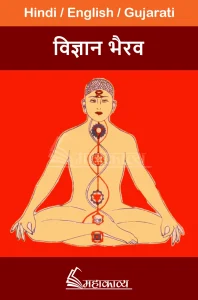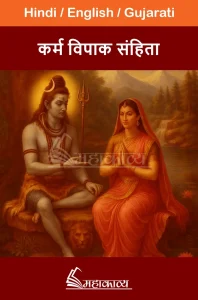Vaisheshik Darshan in English
In the deep tradition of Indian philosophy, Vaisheshik Darshan is considered to be an ancient scientific viewpoint of the soul. It is not limited to the discussion of spirituality or salvation, but rather makes an analytical analysis of the substances, qualities and their functions of the universe. Its original founder is Maharishi Kanada, who composed its Sutras in the second century BC.
Read here in one click ~ Vaisheshik Darshan in Hindi
“काणादं पाणिनीयं च सर्वशास्त्रोपकारकम्”
“Kanaadam Paniniyam Cha Sarvashastraopkarakam”
— This saying makes it clear that Vaisheshik Darshan and Paninian grammar have been considered the basic foundation for all the scriptures.
The codified composition of Vaisheshik Darshan is famous as “Vaisheshik Sutra”, which has a total of 10 chapters, 2 Ahnikas in each and a total of about 370 Sutras. Vaisheshik Darshan connects the liberation of the soul with the real knowledge of physical elements. This philosophy keeps experience, logic and analysis at the center. Although it has great similarities with Nyaya philosophy (in proof, soul, God etc.), yet it is an independent philosophical system.
The most important feature of Vaisheshik philosophy is its Shat-Padart theory. In this Maharishi Kanada has divided the experiences of the whole world into only six basic elements (substances). Through these six substances, he explains the system of the entire physical and spiritual world. These six substances are substance, quality, action, general, special and samavaya. Substance is the basis in which qualities and actions reside. It is an independent entity, and without it neither any quality nor any action can exist.
This theory of six substances of Maharishi Kanada gives us a means to understand the existence, structure and knowledge of the universe from a subtle, scientific and philosophical point of view.
Read here in one click ~ Dhanurveda Samhita in English
This analysis not only simplifies the complexities of philosophy, but also clarifies the difference between the physical world and the soul. Only the knowledge of six substances can become the basis of salvation – this is the belief of Vaisheshik sages.
According to Vaisheshika philosophy, karma is that element which is present in the substance and due to which there is movement or change in the substance. Karmas are momentary and are situated in a substance through the relation of samavaya:
“द्रव्याश्रितं चेष्टास्वरूपं कर्म।
“Dravyaashritam Cheshtaswaroopam Karma.
That is, whatever is situated in a substance and assumes the form of motion (movement or change) is called ‘karma’.
Vaisheshik philosophy makes it clear through five types of actions that all the motion or change that is taking place in the entire universe comes under these five actions. It is through these actions that the activity of substances, the change of qualities and the diversity of experiences are possible. These actions not only explain the physical behaviour of substances, but also provide subtle support to the karmaphala theory of the living being.
Vaisheshik philosophy does not only talk about the soul and salvation, but also looks at the creation, matter, motion, qualities, and events from a logical and analytical point of view. Its purpose is to know “what things are, how they work, and what is the cause and effect behind them.” This is the reason why many natural phenomena have been scientifically explained in this philosophy.
The view of Vaisheshik philosophy shows that natural phenomena are not based on any miracle or mystery, but they arise from the laws of Guna, Karma and their Samavaya of substances. This philosophy is a proof of scientific consciousness and reasoning power of India.
Vaisheshik philosophy is a unique pillar of Indian philosophical tradition, which connects the attainment of spiritual salvation with a deep understanding of physical reality. This philosophy, through the analysis of elements like soul, atom, karma, guna and samavaya, tells that the realization of truth is the path to liberation from suffering and attainment of salvation.
This system propounded by Maharishi Kanada not only answers spiritual questions, but also explains natural phenomena and the physical world in a scientific way. Today, when modern science is moving ahead in the discovery of the smallest units of matter, the ancient atomic theory of Vaisheshik philosophy becomes an inspiring legacy.
This philosophy teaches that:
“Meditation, logic and knowledge – when these three go together, only then the soul can be realized. She is able to recognize her true nature.”





 Download the Mahakavya App
Download the Mahakavya App